Persecution has always been a part of mankind’s history. For centuries, different civilizations and groups have sought to eliminate those who were different from them.
From skin color to nationality, people seem to have a problem with anything that contrasts with what they are accustomed to. More powerful than the hatred between humans for their physical differences, was the hatred between religions and their followers.

The Roman Empire persecuted Christians, who were then fed to lions or crucified. Subsequently, Christians persecuted heretics, whose standard punishment was burning at the stake.
Discrimination and mistreatment are undoubtedly ingrained in the human mind, particularly, in the minds of those who follow religious doctrines. The desire to eradicate all that opposes the dominant agenda has led to the most sickening crusades the world has ever seen.
The image of the witch has gone through an extensive evolution. These changes are important to note since they aid in demonstrating why witchcraft persecutions began.
While our concept of a witch might be a green hag hovering over a bubbling cauldron, some of the past depictions of witches were completely different. The progression of the sorceress has been cyclical, going from good to evil, and back again; navigating the entire spectrum of light and darkness.
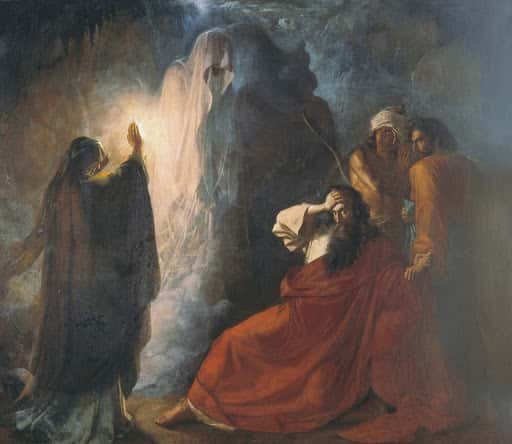
The Shade of Samuel Invoked by Saul Nikiforovich Dmitry Martynov 1857
One of the earliest mentions of witchcraft can be found in the Bible. In the First Book of Samuel, we find the story of The Witch of Endor. She was a powerful necromancer that achieved what God would not: resurrect the dead. Aside from the First Book of Samuel, other books in the Bible signal out witchcraft and divination as unholy practices.
Long before Christianity, however, witches already occupied a place in mythology and olden lore. The ancient Greeks feared the Lamia, a vengeful, blood-thirsty woman-serpent mutant that would swallow children alive; while the Romans cowered from the Strix, a shape-shifting demon that devoured the weak members of society, i.e., women and children. Although initially portrayed as an owl, the Strix eventually became a synonym for female witch.
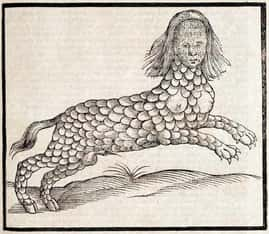
Lamiafrom
The History of Four-footed Beasts(1607)
These creatures emerged due to the countless attempts of ancient civilizations to understand disease and misfortune. When things went wrong, dark magic was usually to blame.
But these ancient beings, although feared, were not persecuted. The early healers we would now consider to be witches were, at some point, celebrated. The haunting image of male-devouring she-devils evolved into the divine wise women; benevolent sacred healers that hoped to illuminate mankind and aid in its ascension.
The role of the wise woman was essential in primitive societies. They would help deliver babies, prepare powerful herbal remedies, and even prophesize future events. Their divine counsel was respected, sought out by royals and common folk.
Eventually, as male-dominant perspectives were introduced, these high priestesses began to be shunned, feared for their power and connection to the spiritual realm. The image of the wise woman regressed, morphing once again into a malevolent, blood-thirsty entity.
Although the struggle between good and evil is as old as time, the Devil figure - or Satan - was introduced by Abrahamic religions. Once the belief in this omnipresent evil had been cemented in the minds of the population, the association between women and the fallen angel began to be incorporated.
The Devil was seductive and played on carnal desires to attract his worshippers. While God asked you to be bashful and resist temptation, Satan wanted you to give in to all your darkest fantasies.
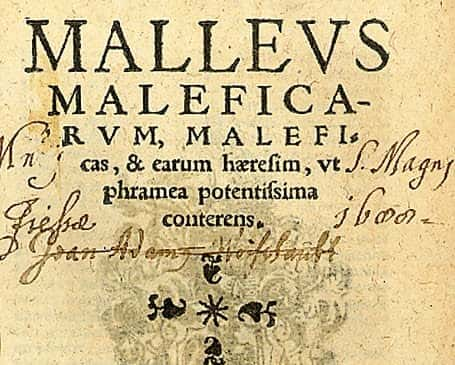
According to early Christian ideology, the Devil would seek out both men and women to join him. However, since women were believed to be insatiable, lustful creatures, they were more likely to allow themselves to be seduced. Their inability to resist temptation made them the perfect prey. This explains why early witch hunts focused almost entirely on women.
The connection between Satan and women was such a pertinent discovery that Christian professor Heinrich Kramer - author of the Malleus Maleficarum - decided to disseminate it throughout Europe. After publishing his popular female-focused witch-hunting manual in 1486, women were regarded in a different, more sinister light.
This book, along with the prevalent beliefs of the time, launched centuries of religious persecution and bloodshed. Witchcraft was deemed heresy by Pope Innocent VIII in 1484 and was therefore remedied in the same manner. In both instances, humans were burned alive at the stake.
Witch hunts are speculated to have started in the 15th century and ended roughly 300 years later. The persecution of witches became a common remedy in Europe, as drought, natural disasters, crop failures, and illnesses were all believed to be caused by evil forces.
Although many countries partook in the mass-murdering of innocents, the bulk of the executions happened in France, Germany, and Switzerland. Thousands were stripped naked and examined for the “Devil’s mark” - a mole, birthmark or spot that was given to a witch by the Devil upon initiation - before being sentenced to death. Although many countries burned their witches, England hung them instead.
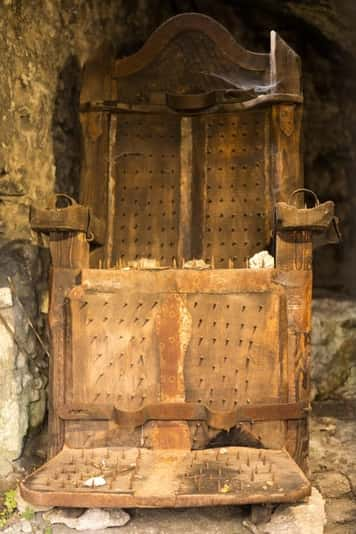
Due to being colonized by Puritan Englishmen, Salem, Massachusetts’s witch hunts were heavily influenced by those taken place in Europe. Since 1563, long before the Salem witch trials, witchcraft was already a crime punishable by death in England.
There were certain physical aspects taken into consideration to identify a witch in England. Unfortunately, older women were thought to be witches and persecuted most frequently. Sunken cheeks, a frail frame, wrinkled skin, and aging were all considered signs of Devil-worship and therefore people with an elderly appearance were executed swiftly.
The iron chair in Ogrodzieniec, Poland was a torture device similar to many others used throughout Europe in the middle ages as punishment for suspected witchcraft. The chairs consisted of 500-1500 spikes with a hole on the seat for fire and coal to be placed under.
These men and women - but mostly women - were tortured incessantly and subjected to different tests. Even if a confession was never obtained, these tests would irrefutably prove the person’s involvement in the dark arts. They were often deprived of sleep and food, pricked and probed for signs of the Devil’s mark. After examination, they were transported to the location of their execution and hanged.
Inevitably, the fear of the Devil was brought to Salem by the Puritan Colonists. Along with their desire to start fresh and build a community from scratch, there were fears of anything that might jeopardize their new haven. In their mind, they had witnessed first-hand the dangers of a witch infested country.
Unsurprisingly, religion played a huge role in the witchcraft persecutions. This time, however, the witch hunt was led by the Puritans, a religion so strict, it could bring about nothing but insanity and delirium. This moral rigidity prevented them from feeling pity for their victims or remorse for their actions.
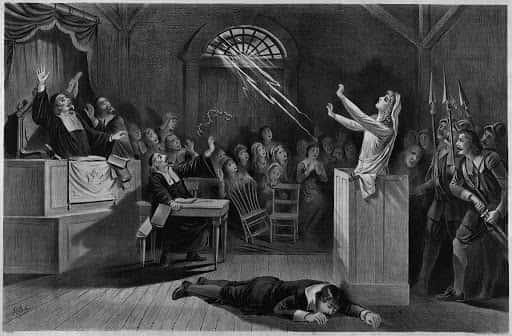
Puritanism is probably the most important factor to consider when reflecting on the Salem witch trials, as it blinded its followers to such a degree that not only were women and men executed under suspicions of witchcraft, two dogs were killed as well.
When Betty Parris and Abigail Williams became inexplicably ill, the Puritans had no choice but to enact a monstrous witch persecution in the Massachusetts Bay Colony. Identifying, trying, convicting and executing 19 guiltless people.
The witch hunt in Salem was identical to those taken place in England, but it introduced a new concept: Spectral Evidence. The court relied mostly on this kind of evidence,
therefore no further proof was needed for a conviction.
Spectral Evidence dictates that a witch’s specter can leave their body and show itself to their victims, either in dreams or in their waking life. Seeing the specter of a supposed witch was used as confirmation of their occult practices. Nevertheless, the possibility that the accusers were lying was never considered.
Similarly to England, those persecuted for witchcraft in Salem were mostly women. Although they were all from different backgrounds and age groups, they had one thing in common: social rejection.
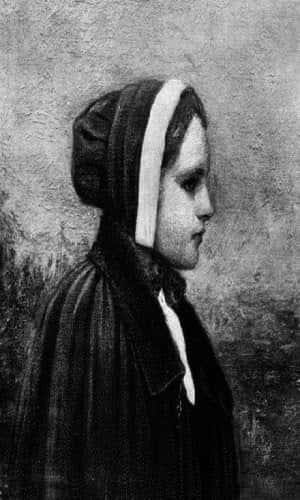
Goody Bishop was 60 years old when she was executed for witchcraft in Salem in 1692
The witch hunt in Salem got so out of hand that the pattern was eventually broken, but in the beginning, the accused were women that had upset the community in some form.
The torture tactics used were also comparable. In Salem, suspected witches were first questioned. Once again, they would be stripped naked and examined. The goal was to find any abnormality on the body.
The searches were incredibly strict, any birthmark or sore would be taken as a confirmation of practicing witchcraft. Since every human has some form of mark or defect, this examination almost always yielded the expected results.
After the examination, the so-called witches were then incarcerated until trial or until they confessed. To speed up the process, of course, they would be tortured in jail. In a letter written by notable Salem trial victim John Proctor, he describes the sinister torture methods prisoners were subjected to.
Proctor narrates that two of the prisoners that shared his cell - and his son - had been tied neck and heels until they got nosebleeds. Naturally, the uncomfortable restrictions made them confess to being in league with the Devil.
The persecution of witches in the western world was a dark time in human history. The hate, misjudgment, and fear of the unknown culminated in the death of thousands. Unfortunately, by the time people started to realize what they had done, it was too late.
Although despicable, the actions of our ancestors taught us something. They showed us who we can and should be. After centuries, we finally learned to respect each other. To celebrate our differences and coexist. This is a process and we still have a long way to go. But seeing how we have evolved makes us look to the future, hopeful of achieving great peace and understanding.